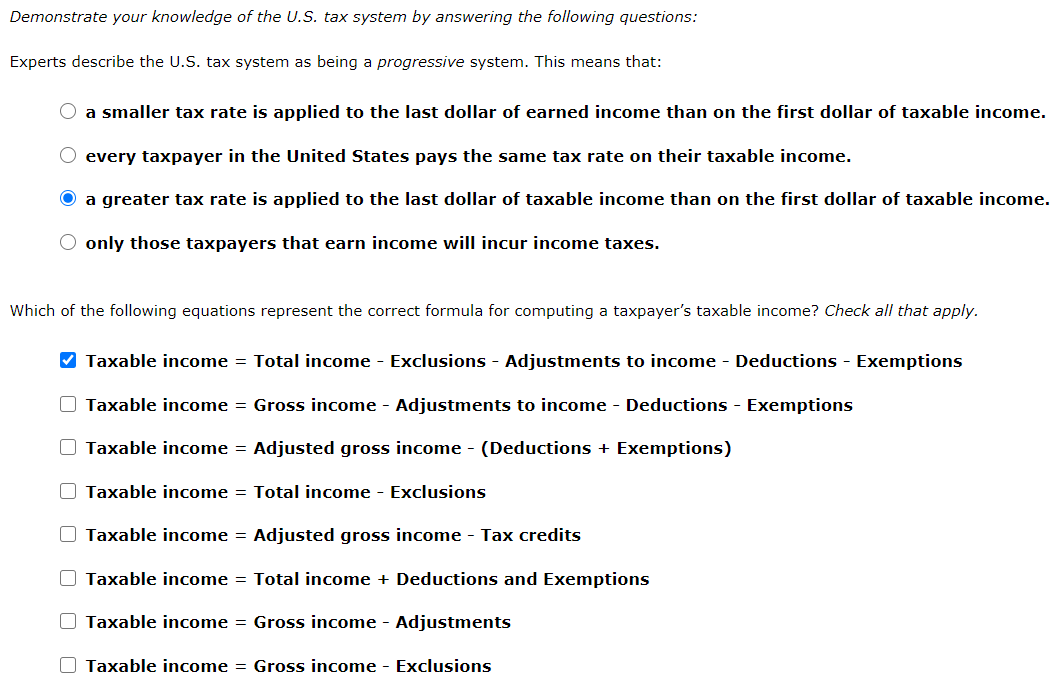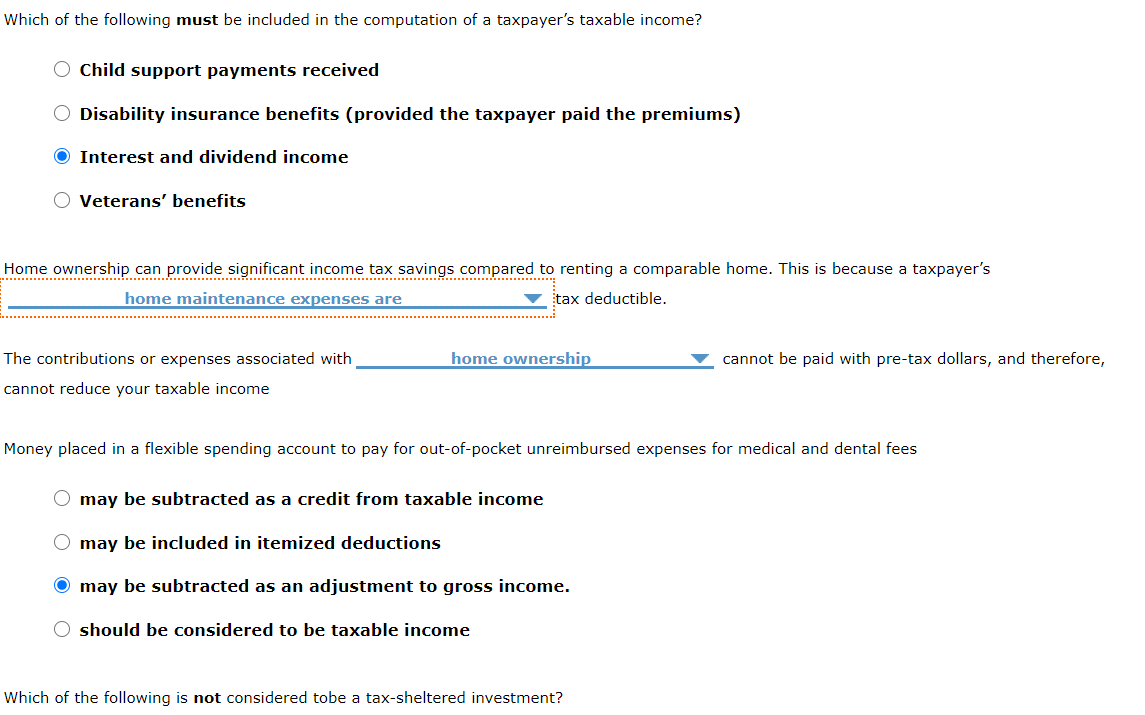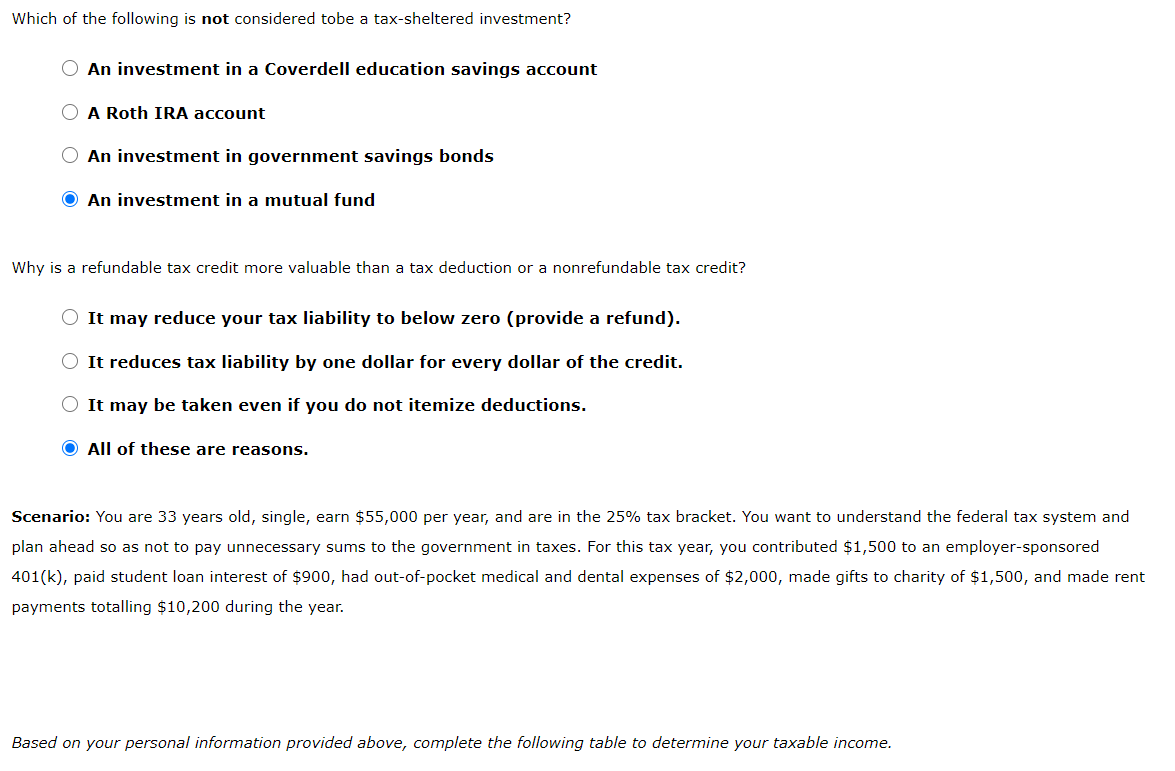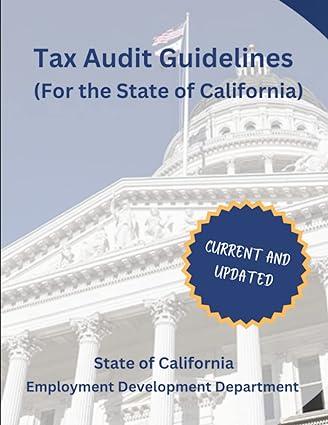Answered step by step
Verified Expert Solution
Question
1 Approved Answer
Please the the questions in bold thank you so much! Demonstrate your knowledge of the U.S. tax system by answering the following questions: Experts describe




Please the the questions in bold thank you so much!
Demonstrate your knowledge of the U.S. tax system by answering the following questions: Experts describe the U.S. tax system as being a progressive system. This means that: a smaller tax rate is applied to the last dollar of earned income than on the first dollar of taxable income. O every taxpayer in the United States pays the same tax rate on their taxable income. a greater tax rate is applied to the last dollar of taxable income than on the first dollar of taxable income. only those taxpayers that earn income will incur income taxes. Which of the following equations represent the correct formula for computing a taxpayer's taxable income? Check all that apply. Taxable income = Total income - Exclusions - Adjustments to income - Deductions - Exemptions Taxable income = Gross income - Adjustments to income - Deductions - Exemptions Taxable income = Adjusted gross income -(Deductions + Exemptions) Taxable income = Total income - Exclusions Taxable income = Adjusted gross income - Tax credits Taxable income = Total income + Deductions and Exemptions Taxable income = Gross income - Adjustments Taxable income = Gross income - Exclusions Which of the following must be included in the computation of a taxpayer's taxable income? O Child support payments received O Disability insurance benefits (provided the taxpayer paid the premiums) O Interest and dividend income Veterans' benefits Home ownership can provide significant income tax savings compared to renting a comparable home. This is because a taxpayer's home maintenance expenses are tax deductible. home ownership cannot be paid with pre-tax dollars, and therefore, The contributions or expenses associated with cannot reduce your taxable income Money placed in a flexible spending account to pay for out-of-pocket unreimbursed expenses for medical and dental fees O may be subtracted as a credit from taxable income O may be included in itemized deductions may be subtracted as an adjustment to gross income. O should be considered to be taxable income Which of the following is not considered tobe a tax-sheltered investment? Which of the following is not considered tobe a tax-sheltered investment? O An investment in a Coverdell education savings account A Roth IRA account An investment in government savings bonds An investment in a mutual fund Why is a refundable tax credit more valuable than a tax deduction or a nonrefundable tax credit? It may reduce your tax liability to below zero (provide a refund). It reduces tax liability by one dollar for every dollar of the credit. It may be taken even if you do not itemize deductions. O All of these are reasons. Scenario: You are 33 years old, single, earn $55,000 per year, and are in the 25% tax bracket. You want to understand the federal tax system and plan ahead so as not to pay unnecessary sums to the government in taxes. For this tax year, you contributed $1,500 to an employer-sponsored 401(k), paid student loan interest of $900, had out-of-pocket medical and dental expenses of $2,000, made gifts to charity of $1,500, and made rent payments totalling $10,200 during the year. Based on your personal information provided above, complete the following table to determine your taxable income. Scenario: You are 33 years old, single, earn $55,000 per year, and are in the 25% tax bracket. You want to understand the federal tax system and plan ahead so as not to pay unnecessary sums to the government in taxes. For this tax year, you contributed $1,500 to an employer-sponsored 401(k), paid student loan interest of $900, had out-of-pocket medical and dental expenses of $2,000, made gifts charity of $1,500, and made rent payments totalling $10,200 during the year. Based on your personal information provided above, complete the following table to determine your taxable income. Hint: Remember that the U.S Tax Code provides for a standard deduction of $6,300 and a personal exemption of $4,050. Enter adjustments, deductions, and exemptions as negative numbers. If your answer is zero, enter "0". Taxable income calculation Total income $ Less: Adjustments to income Adjusted gross income Less: Deductions Subtotal Less: Exemptions Taxable incomeStep by Step Solution
There are 3 Steps involved in it
Step: 1

Get Instant Access to Expert-Tailored Solutions
See step-by-step solutions with expert insights and AI powered tools for academic success
Step: 2

Step: 3

Ace Your Homework with AI
Get the answers you need in no time with our AI-driven, step-by-step assistance
Get Started


